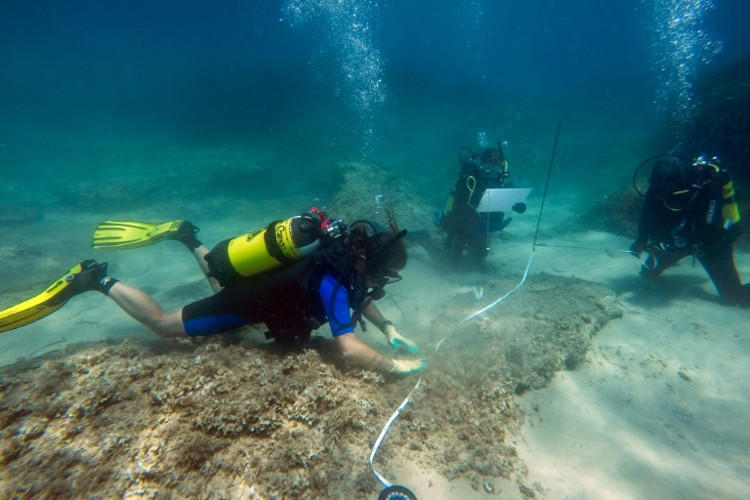Roman city was sunk by tsunamis 1,600 years ago
Large amounts of undersea ruins from an ancient Roman city have just been discovered off the coast of Tunisia. This finding confirms the theory that Neapolis was partially submerged by tsunamis in the 4th century AD.
At the same time it also found that Neapolis used to be the largest center in the Roman world for garum production - a fermented spice derived from the ancient Romans.

Archaeologists study the ruins of Neapolis city under the sea.
Mounir Fantar, the archaeologist in charge of cooperation between Tunisia and Italy, said it was " a great discovery" , the underwater expedition also discovered signs of streets and memorials.
About 100 barrels to produce garum were also found.
'This discovery allows us to make sure that the city of Neapolis is a center for garum production and fishing, possibly the largest center of the Roman world' - Mounir Fantar said - "Neapolis is rich thanks to garum '.
Fantar's team has been working since 2010 to search for the port of Neapolis and they only made a breakthrough when they found the ruins that lasted nearly 50 hectares this summer thanks to weather conditions.

The ruins area of Neapolis.
This finding shows that Neapolis was partially engulfed by a tsunami on July 21, 365 AD. It was this tsunami that devastated the city of Alexandria in Egypt and the Greek island of Grete.
Neapolis means 'new city' in Greek. This is the old city with ruins scattered throughout Nabeul town on the coast of Tunisia.
- Discover treasures in the Roman ship wrecked 1600 years ago
- Roman city 2,000 years under construction site
- Roman villa nearly intact after 1,000 years under the park
- Found the wreck sunk for more than 100 years
- Huge pool in ancient Roman city
- The city of ancient super-rich Romans sank under the sea
- Discovering the old city with a 2,000-year-old penile image?
- Revealed 'underground city' under the Roman emperor's mansion
- Vietnam has a scenario to deal with tsunamis
- Discover an entire ancient Roman cemetery under the parking lot
- Villas more than 1,500 years old may belong to the Roman emperor
- Discovered an ancient arrow 2,000 years ago of the Romans in Israel
 Discovered an ancient centipede fossil 99 million years old
Discovered an ancient centipede fossil 99 million years old Discovered bat-like dinosaurs in China
Discovered bat-like dinosaurs in China Discovered a 200-year-old bronze cannon of the coast
Discovered a 200-year-old bronze cannon of the coast Discover 305 million-year-old spider fossils
Discover 305 million-year-old spider fossils